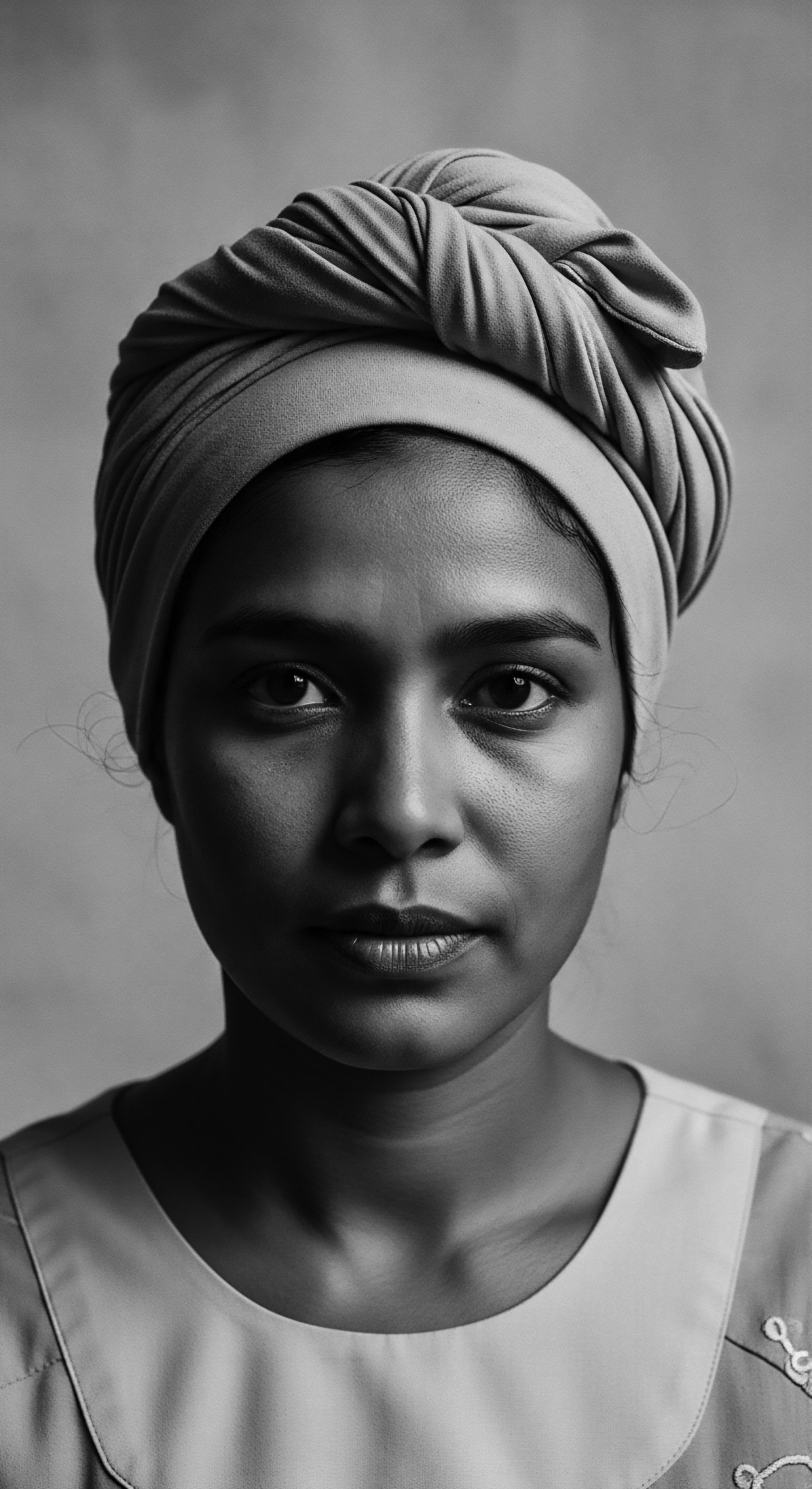
Fundamentals
The preservation of moisture, at its core, represents a foundational principle within the realm of hair care, particularly for strands that coil, curl, and wave with inherent grace. This concept, often distilled into its simplest form, refers to the deliberate actions and routines undertaken to ensure the hair shaft retains an optimal level of hydration. It is not merely about applying water; rather, it speaks to the art of holding that vital liquid within the hair’s very structure, shielding it from the constant evaporative forces of the environment. For textured hair, this sustained hydration is the bedrock upon which health, resilience, and visual vibrancy are built.
Consider the elemental composition of hair itself ❉ a complex protein structure, primarily keratin, which possesses a natural affinity for water. When hair is adequately moisturized, its outermost layer, the cuticle, lies smoothly, reflecting light with a characteristic sheen. This smooth alignment also minimizes friction between individual strands, preventing tangles and breakage.
Conversely, when moisture escapes, the cuticle lifts, leading to a rougher texture, diminished luster, and increased vulnerability to external stressors. The practice of moisture preservation, therefore, becomes a continuous dialogue between the hair’s intrinsic needs and the care provided, a dialogue that has echoed through generations of textured hair traditions.
Moisture preservation for textured hair is the art of securing vital hydration within the hair shaft, a practice intuitively understood across ancestral traditions for enduring strand health.
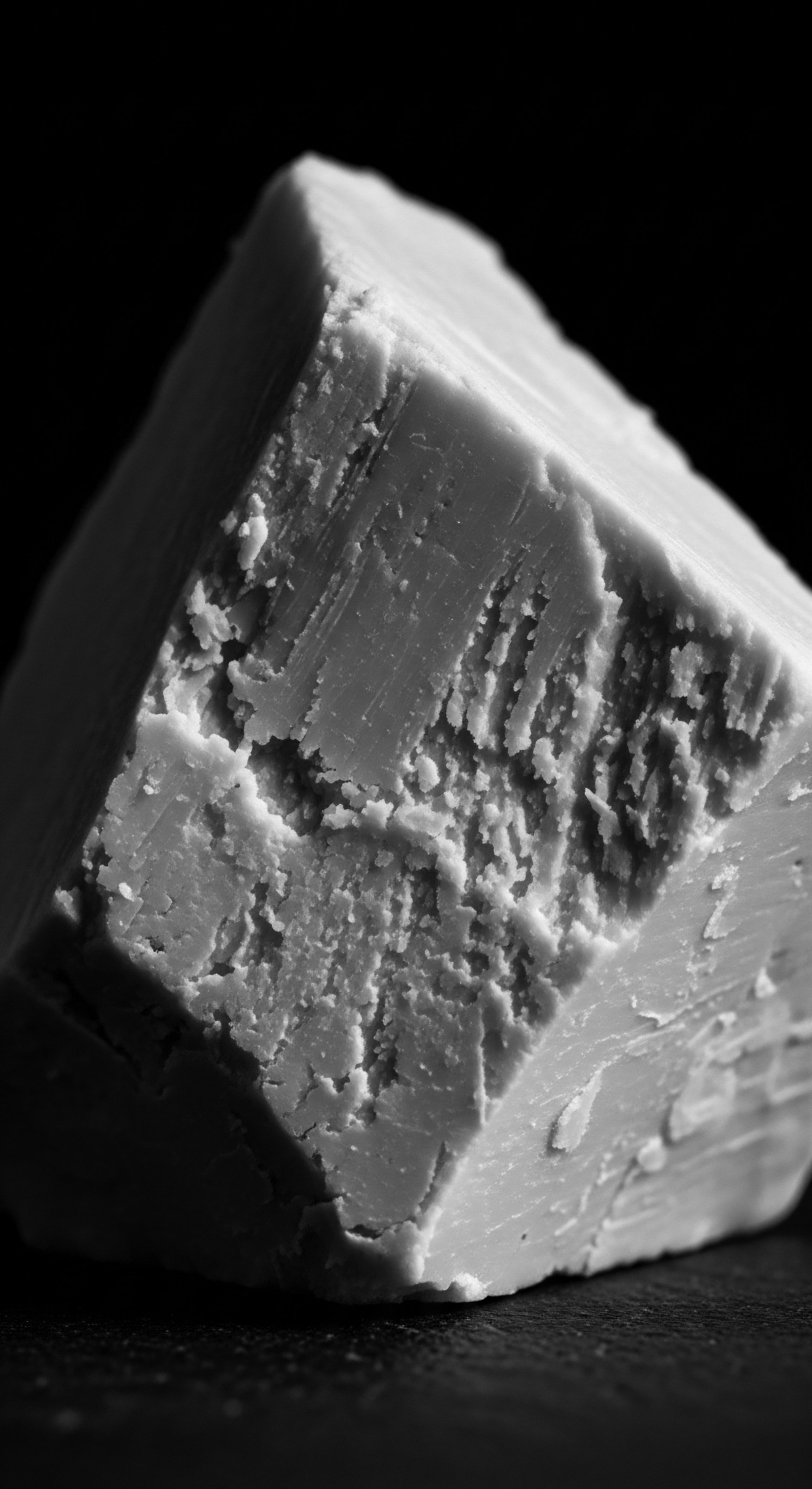
The Unique Architecture of Textured Strands
Understanding the distinct structural characteristics of textured hair is paramount to grasping the deep significance of moisture preservation. Unlike straight hair, which typically possesses a round or oval cross-section, coily and kinky strands often exhibit an elliptical or flattened shape. This unique geometry, coupled with the frequent twists and turns along the hair shaft, creates numerous points where the cuticle layers can lift.
These lifted cuticles, while contributing to the beautiful volume and definition characteristic of textured hair, also present more surface area for moisture to escape. The natural oils produced by the scalp, known as sebum, also face a more challenging journey traversing the intricate coils from root to tip, leaving the ends particularly susceptible to dryness.
The intrinsic nature of textured hair, therefore, means it is inherently more prone to dehydration than its straighter counterparts. This biological reality elevates moisture preservation from a mere preference to an absolute necessity. Traditional care practices, long before the advent of modern scientific tools, intuitively recognized this vulnerability.
They developed ingenious methods and utilized natural botanicals to address this very challenge, ensuring the hair remained supple and strong despite environmental demands. The understanding of moisture’s vital role for these hair types is not a contemporary discovery; it is a legacy.
- Hair Shape ❉ Coily and kinky strands often have an elliptical or flattened cross-section, contributing to their distinctive curl patterns.
- Cuticle Lift ❉ The many twists and turns along the hair shaft naturally lead to areas where the cuticle layers are raised, offering pathways for moisture loss.
- Sebum Distribution ❉ Scalp oils struggle to travel down highly textured strands, leaving the mid-lengths and ends particularly susceptible to dryness.
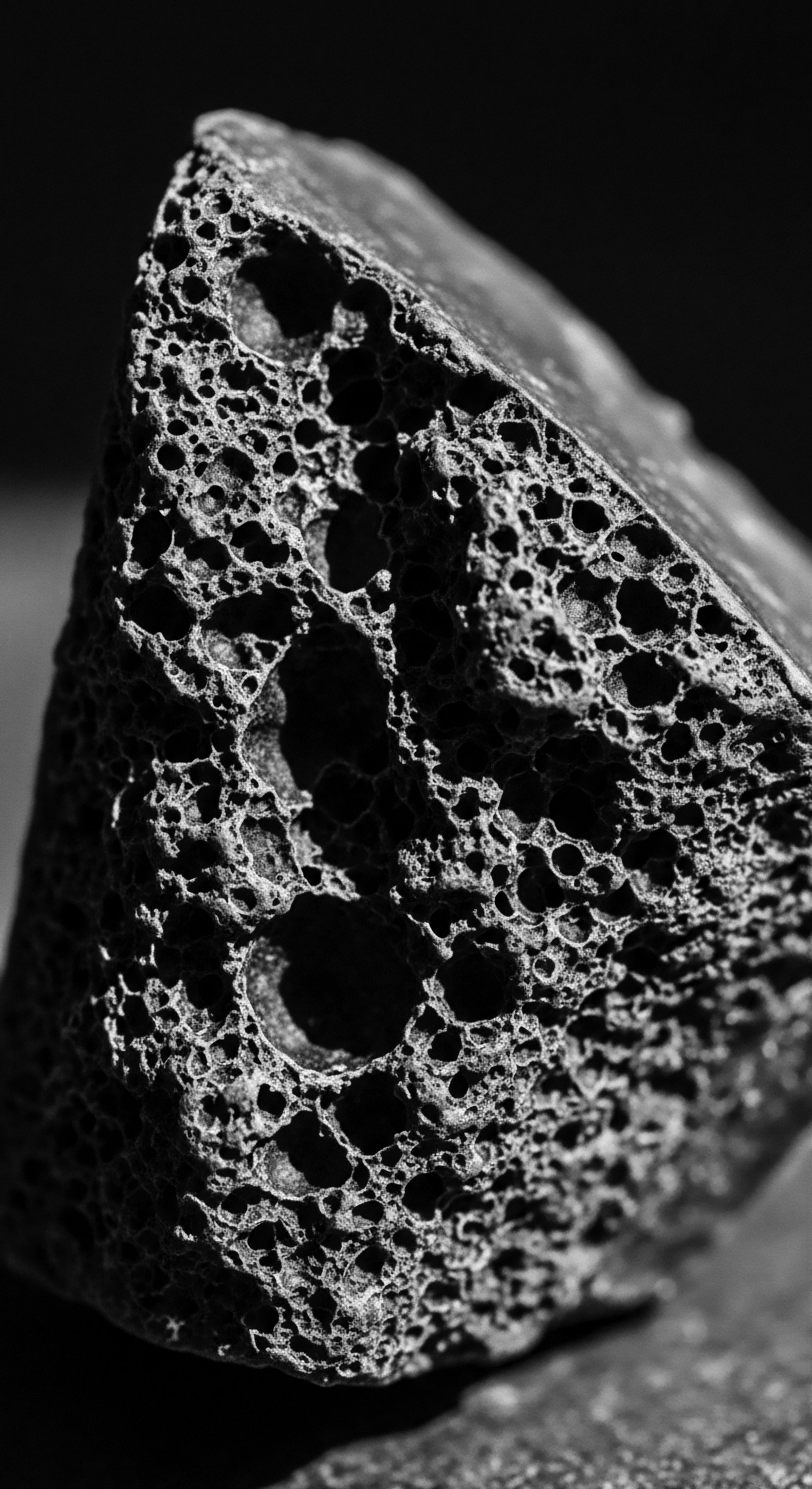
Elemental Approaches to Hydration
From ancient times, communities with a deep reverence for their textured hair understood the fundamental requirements for maintaining its vitality. The primary method involved the introduction of water, often through direct rinsing or bathing, followed by the application of substances designed to seal that moisture within. This two-step process, now often referred to as the “liquid, oil, cream” (LOC) or “liquid, cream, oil” (LCO) method in contemporary hair care, finds its ancestral roots in the simple yet profound wisdom of applying a hydrating agent followed by a protective layer. The historical designation of these practices, though not termed “moisture preservation” in the modern sense, conveyed the same intention ❉ to keep the hair soft, pliable, and resistant to damage.
The materials chosen for these sealing purposes were drawn directly from the earth’s bounty. Plant-based oils, butters, and sometimes even animal fats, were meticulously prepared and applied. These natural emollients created a protective barrier on the hair shaft, slowing the rate at which water could evaporate.
The ritual of oiling the hair, passed down through generations, was not merely cosmetic; it was a deeply practical application of moisture preservation, ensuring the hair’s integrity in diverse climates, from the humid tropics to the arid savannahs. This historical application of knowledge underscores the continuous human endeavor to harmonize with the natural world for well-being.
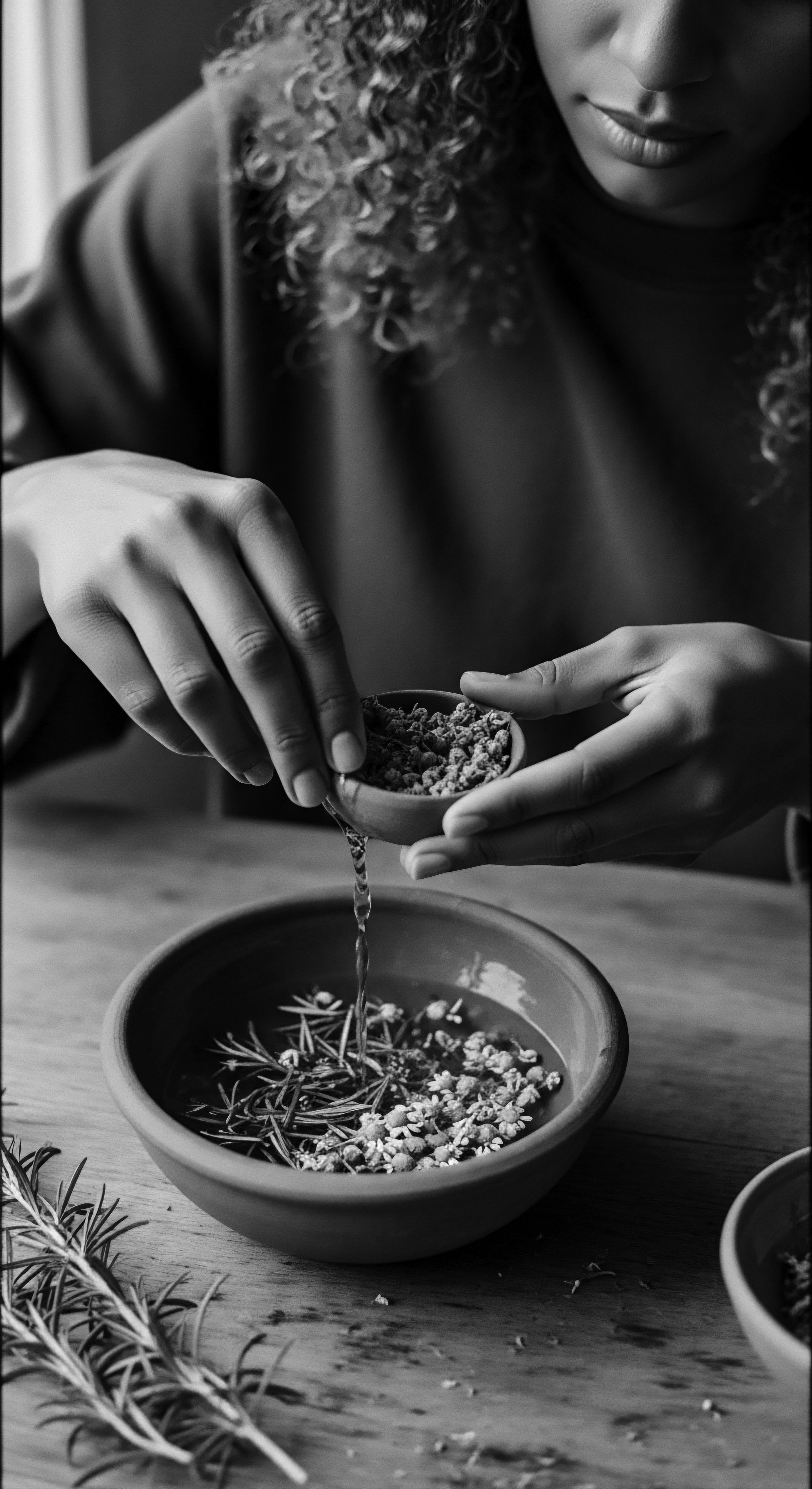
Intermediate
Moving beyond the foundational tenets, an intermediate understanding of moisture preservation for textured hair necessitates a deeper exploration of its functional mechanisms and the historical ingenuity applied to this vital practice. This level of comprehension acknowledges that retaining hydration is not a passive act but a dynamic process involving specific chemical interactions and physical barriers. The significance of this process extends beyond mere aesthetics, reaching into the very core of hair health, growth potential, and the cultural lexicon of textured hair care. The elucidation of these processes reveals a profound connection between ancestral wisdom and contemporary scientific validation.
The hair shaft’s ability to absorb and hold water is influenced by its porosity—the condition of its cuticle layer. Hair with a highly lifted cuticle, often described as high porosity, readily absorbs water but also releases it just as quickly. Conversely, hair with a tightly closed cuticle, or low porosity, struggles to absorb water initially but retains it more effectively once hydrated. Textured hair, due to its inherent structural variations, can exhibit a range of porosities, often with varying levels along a single strand.
Therefore, the strategic application of moisture preservation techniques becomes even more critical, adapting to these individual needs to optimize hydration and prevent brittleness. This adaptive approach has been a silent language spoken through the hands of caregivers for centuries.
Moisture preservation, viewed intermediately, is a dynamic interplay of hair porosity and strategic product application, echoing ancestral adaptations to textured hair’s unique needs.
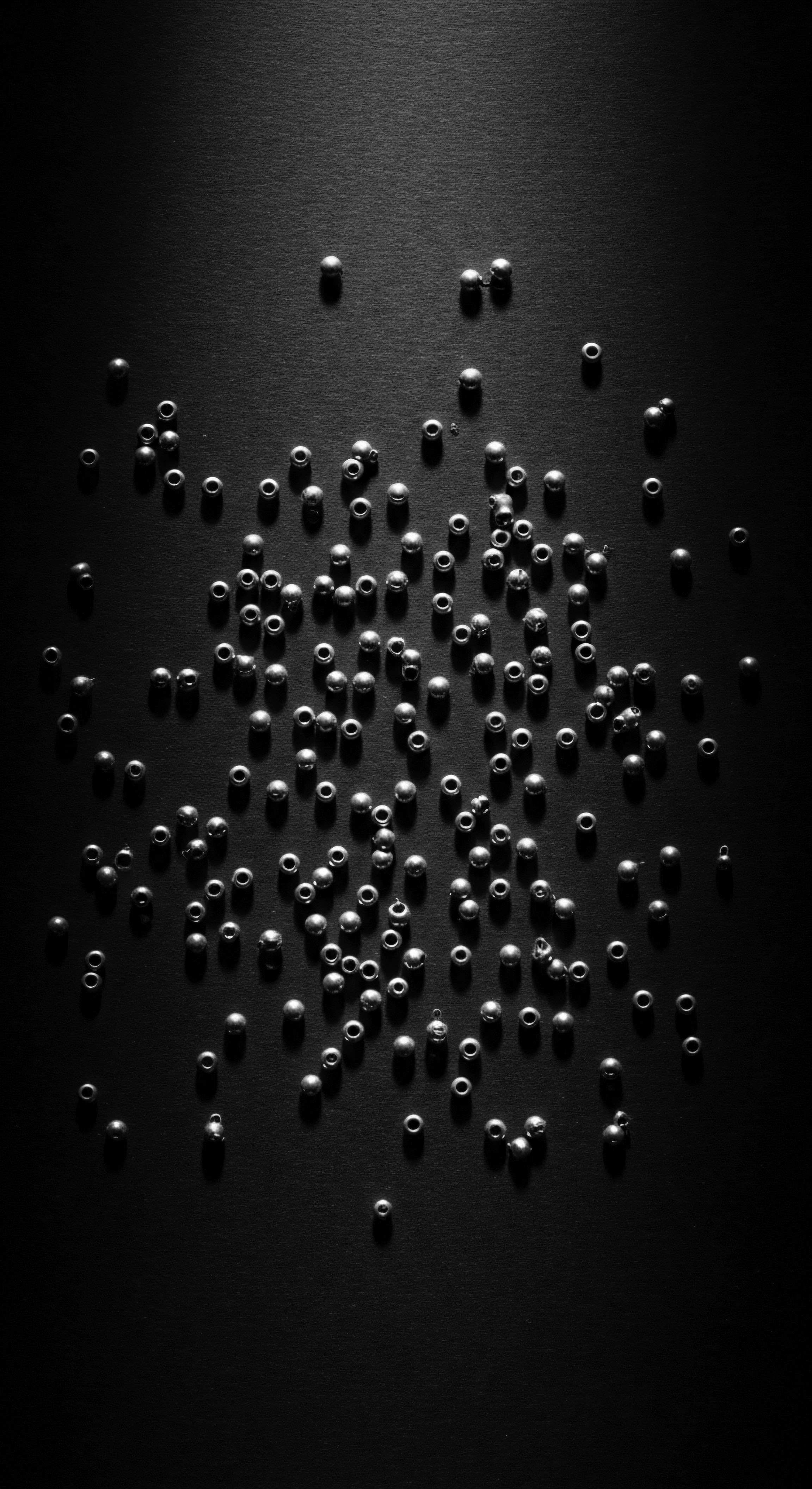
Ancestral Ingenuity in Humectants and Occlusives
Long before laboratories identified humectants and occlusives, ancestral communities intuitively understood their properties and integrated them into their hair care rituals. Humectants are substances that attract and hold water from the air, while occlusives create a physical barrier to seal moisture in. Traditional ingredients often possessed both properties, or were used in combinations to achieve a synergistic effect.
For instance, various plant gums, honey, and certain fruit pulps acted as natural humectants, drawing ambient moisture to the hair. These were often followed by, or mixed with, rich plant butters and oils that served as potent occlusives.
Consider the widespread use of Shea Butter (Vitellaria paradoxa) across West Africa, a practice deeply embedded in the cultural heritage of numerous ethnic groups. For generations, communities like the Dagomba people in Ghana have meticulously processed shea nuts into a rich, emollient butter. This butter, applied liberally to hair and skin, served as a natural sealant, forming a protective layer that minimized water evaporation, particularly vital in the arid climates. Its consistent use allowed textured hair to maintain its suppleness and resilience, preventing the dryness and breakage that harsh environmental conditions might otherwise induce.
This historical application speaks to a profound understanding of the hair’s needs, predating modern chemical analysis. (Byrd & Tharps, 2001). The historical designation of shea butter as a protective agent highlights its primary role in moisture preservation, ensuring the hair’s structural integrity.
| Traditional Ingredient Shea Butter (Vitellaria paradoxa) |
| Ancestral Application Applied as a protective coating, often warmed for easier distribution, to hair and scalp after washing. |
| Modern Scientific Role (Implied) Occlusive and emollient, forming a lipid barrier to reduce transepidermal water loss from the hair shaft. |
| Traditional Ingredient Coconut Oil (Cocos nucifera) |
| Ancestral Application Used for pre-wash treatments and daily conditioning, often infused with herbs. |
| Modern Scientific Role (Implied) Penetrates the hair shaft to reduce protein loss and provides an occlusive layer, aiding in moisture retention. |
| Traditional Ingredient Aloe Vera Gel (Aloe barbadensis miller) |
| Ancestral Application Applied directly to hair for hydration and soothing scalp. |
| Modern Scientific Role (Implied) Natural humectant, drawing moisture to the hair, and provides a light film for some moisture sealing. |
| Traditional Ingredient Honey |
| Ancestral Application Mixed with water or other ingredients for conditioning treatments. |
| Modern Scientific Role (Implied) Potent humectant, attracting and holding moisture from the atmosphere to the hair. |
| Traditional Ingredient These ancestral practices, often rooted in local ethnobotany, reveal an intuitive understanding of hair's needs for sustained hydration. |
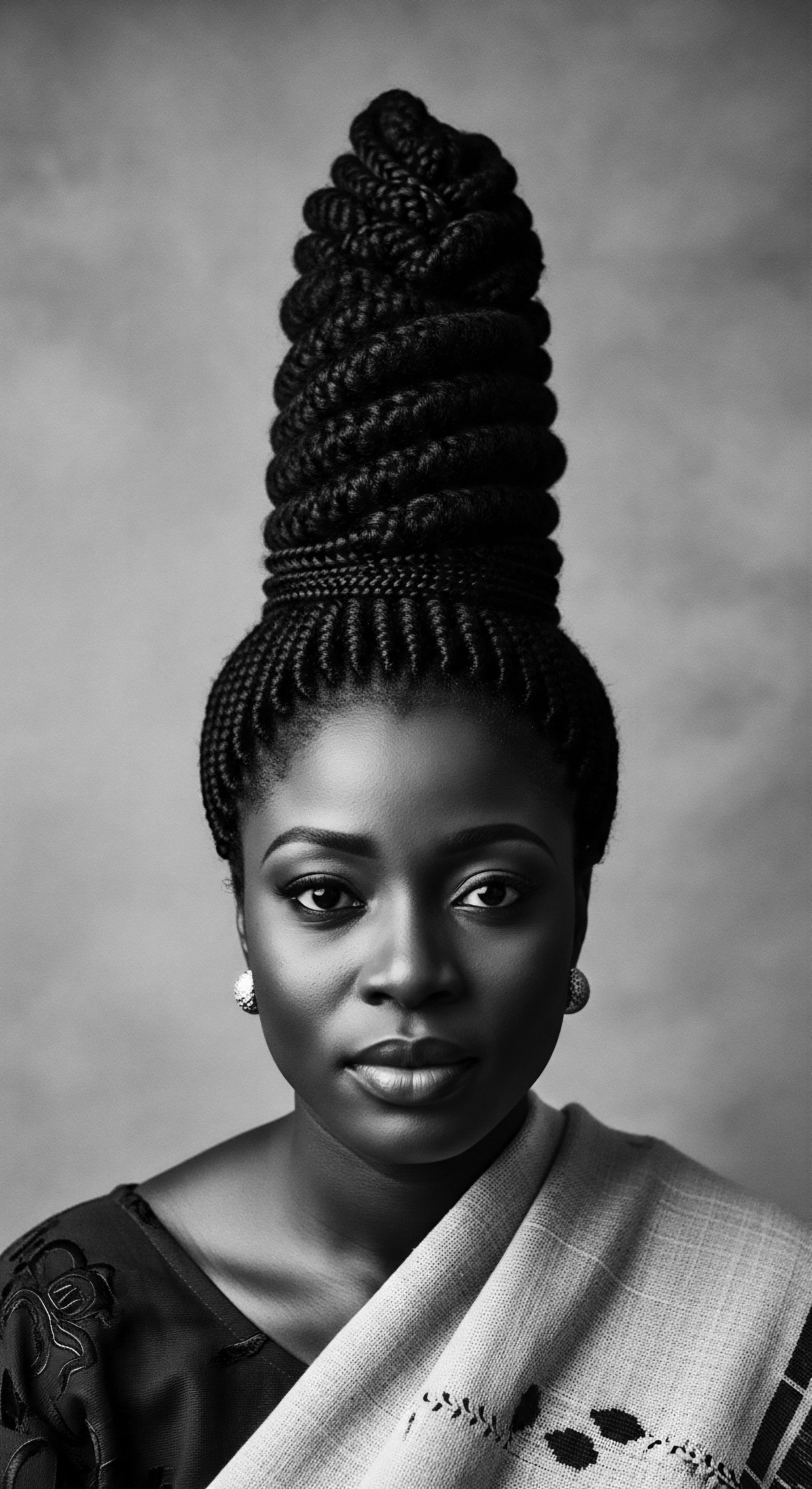
The Rhythm of Rehydration and Sealing
The daily or weekly rhythm of hair care in many textured hair traditions was inherently structured around the cycles of rehydration and sealing. This methodical approach recognized that moisture, once applied, would gradually diminish, necessitating regular replenishment. The designation of specific days for washing, conditioning, and protective styling within communities underscored the collective understanding of this continuous need. For instance, in many Afro-diasporic households, wash day rituals became elaborate affairs, not just for cleansing but for saturating the hair with water and then carefully applying various preparations to lock in that moisture for the days ahead.
The application of hair styles that minimized exposure to environmental elements also played a pivotal role in moisture preservation. Braids, twists, and various forms of updos, beyond their aesthetic and social significations, served a practical purpose ❉ they reduced the surface area of the hair exposed to dry air, wind, and sun, thereby slowing down moisture evaporation. This interplay between practical care and cultural expression is a testament to the holistic approach embedded within textured hair heritage, where beauty and health were inextricably linked. The import of these protective styles extends beyond their visual appeal, speaking to their function in safeguarding the hair’s hydration.

Academic
The academic definition of moisture preservation, when applied to textured hair, transcends a simple explanation of hydration and delves into a complex interplay of biophysical properties, environmental thermodynamics, and socio-cultural adaptations. It is the scientific and historical delineation of processes by which the hair fiber, particularly those exhibiting helical and tortuous geometries, maintains its optimal water content against desiccating forces, thereby preserving its mechanical integrity, optical properties, and overall physiological function. This scholarly interpretation acknowledges that the efficacy of moisture preservation is not solely dependent on product chemistry but is deeply interwoven with the unique structural biology of textured hair and the ancestral knowledge systems that have long navigated its complexities. The statement of this concept requires a rigorous examination of its multi-layered aspects.
From a material science perspective, hair’s ability to retain moisture is governed by its keratinous matrix, which is highly hygroscopic, meaning it readily absorbs water. However, the unique morphology of textured hair, characterized by its elliptical cross-section, irregular twists, and often discontinuous cuticle layers, presents a greater challenge for water retention compared to straight hair. The elevated surface area and increased propensity for cuticle lifting in textured strands accelerate the rate of transepidermal water loss (TEWL) from the hair shaft.
Therefore, the academic discourse on moisture preservation focuses on strategies to mitigate this inherent vulnerability, primarily through the manipulation of the hair’s surface chemistry and the creation of effective occlusive barriers. This detailed explanation of the biophysical realities underpins the necessity of deliberate moisture management.
Academic inquiry into moisture preservation for textured hair examines the biophysical challenges of water retention in helical fibers and the historical adaptations to these inherent vulnerabilities.
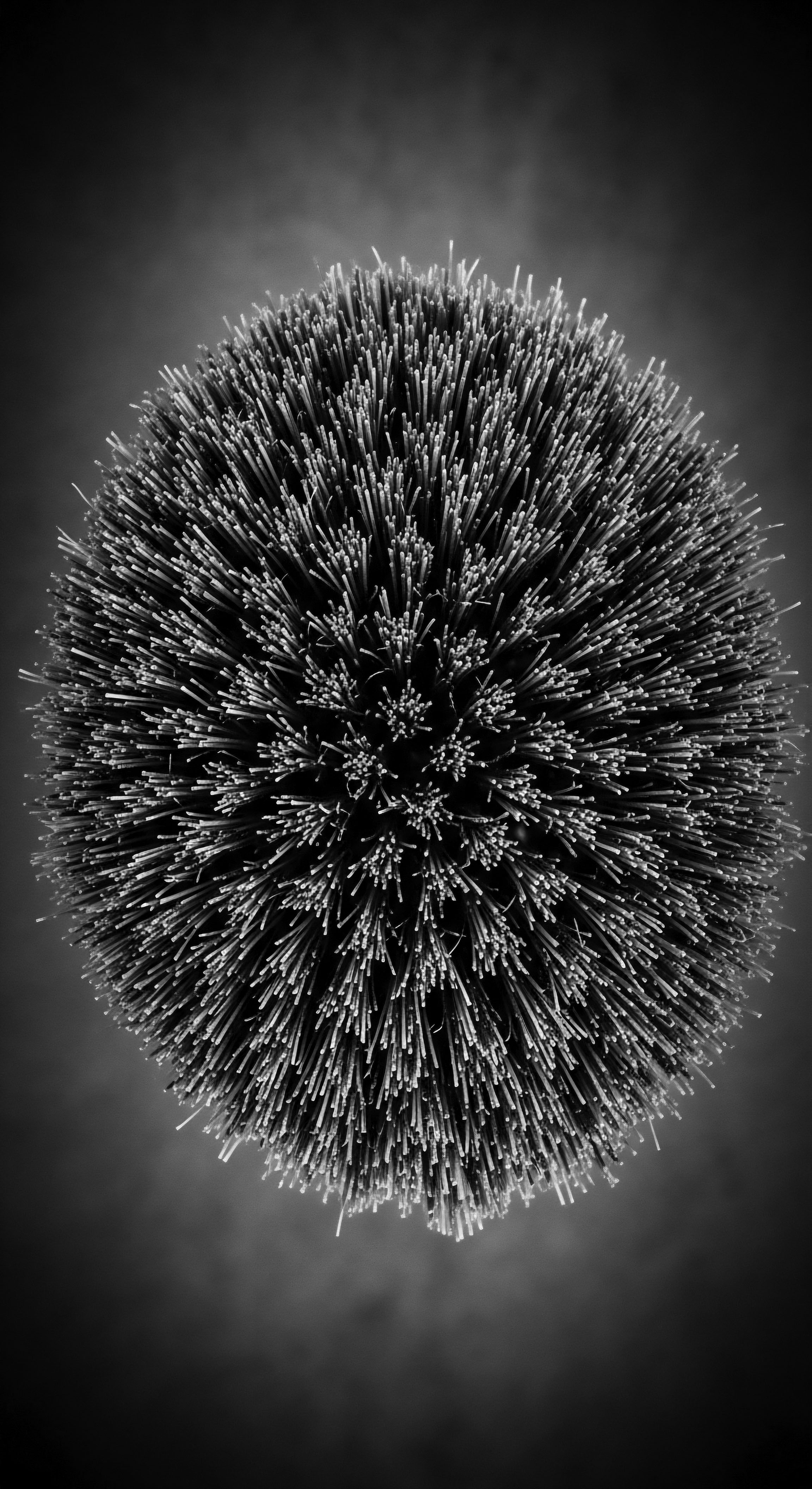
Thermodynamic Considerations and Hair Hydration
The academic understanding of moisture preservation is inextricably linked to the principles of thermodynamics, specifically the concept of water activity and vapor pressure gradients. Water molecules move from areas of higher concentration to lower concentration. In the context of hair, this means that if the ambient humidity is lower than the moisture content within the hair shaft, water will naturally evaporate from the hair into the surrounding air. The challenge for textured hair, given its aforementioned structural predispositions to moisture loss, is to minimize this evaporative flux.
This is achieved through the application of emollients and occlusives, which create a hydrophobic barrier on the hair’s surface, effectively reducing the diffusion rate of water molecules. The implication of this thermodynamic reality dictates specific care strategies.
Moreover, the glass transition temperature of keratin, the primary protein in hair, is significantly affected by its water content. Dry hair has a higher glass transition temperature, making it more rigid and prone to fracture. Hydrated hair, conversely, has a lower glass transition temperature, rendering it more pliable and elastic.
Moisture preservation, therefore, is not merely about aesthetic appeal; it is a critical determinant of the hair fiber’s mechanical properties, directly influencing its tensile strength, elasticity, and resistance to breakage during styling and manipulation. The significance of maintaining optimal hydration is thus rooted in preventing irreversible structural damage at a molecular level.
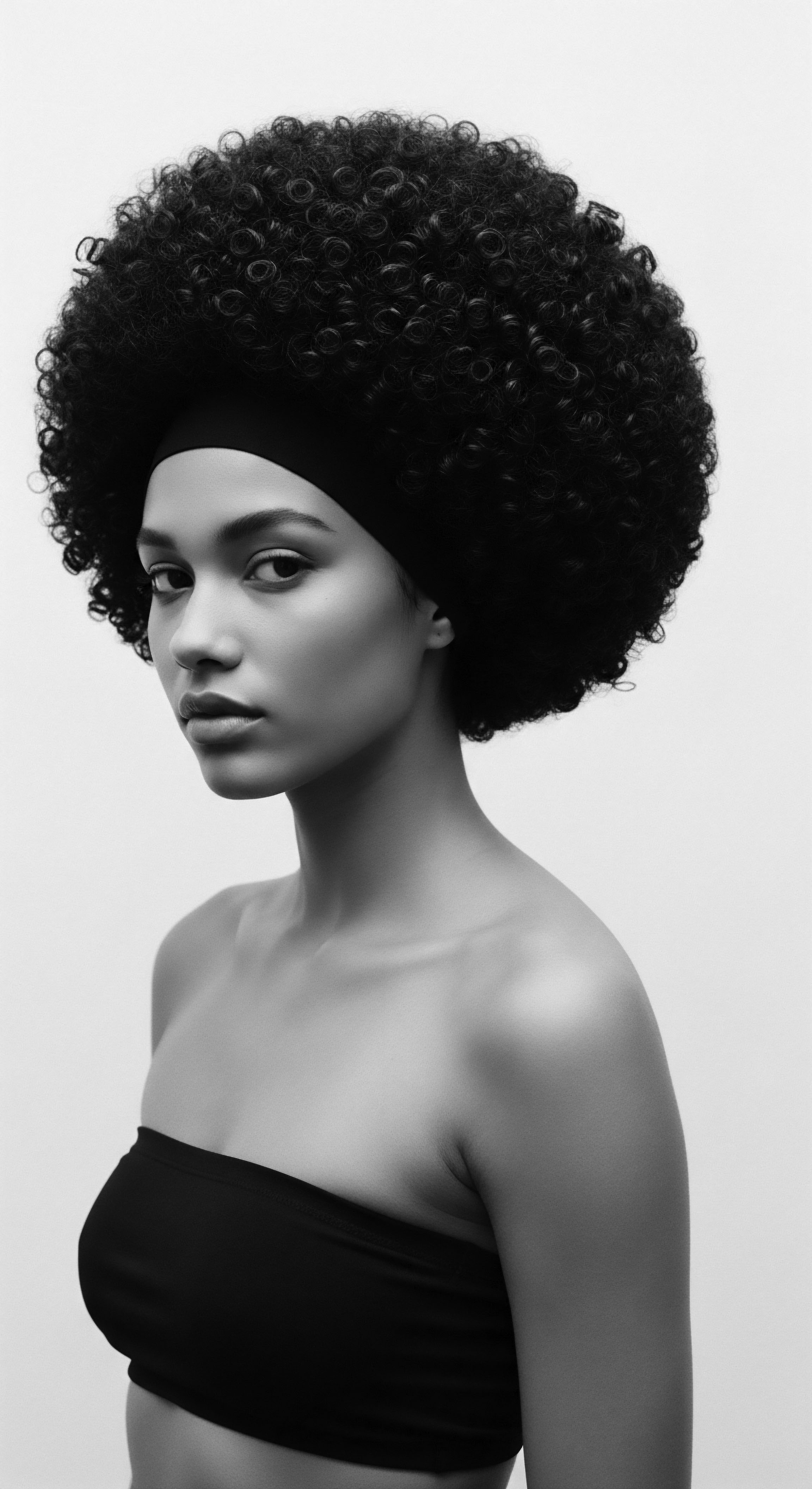
Ethnobotanical Wisdom and Scientific Validation
A rigorous academic examination of moisture preservation in textured hair cannot bypass the rich tapestry of ethnobotanical knowledge accumulated over millennia by communities with ancestral ties to these hair types. Many traditional practices, once dismissed as anecdotal or folkloric, are now being systematically validated by modern scientific inquiry. For instance, the widespread use of various plant oils and butters—such as Moringa Oil in West Africa, Argan Oil in North Africa, or Babassu Oil in Brazil—demonstrates an intuitive understanding of lipid chemistry and its role in creating effective occlusive layers. These traditional applications represent a sophisticated, empirically derived science.
Research in cosmetic science increasingly identifies the fatty acid profiles of these traditional ingredients as key to their efficacy in moisture preservation. For example, shea butter, rich in stearic and oleic acids, forms a non-greasy yet protective film that reduces water loss without suffocating the hair shaft. Coconut oil, with its high lauric acid content, has a unique ability to penetrate the hair cuticle and reduce protein loss, thereby supporting the hair’s internal moisture balance.
This academic lens allows us to appreciate the depth of ancestral knowledge, not as quaint customs, but as sophisticated biotechnological applications developed through generations of careful observation and practice. The purport of these historical methods gains new appreciation through contemporary analysis.
A study by Rele and Mohile (2003) investigated the effects of mineral oil, sunflower oil, and coconut oil on hair. Their findings indicated that coconut oil, due to its unique molecular structure, was the only oil among those tested capable of reducing protein loss for both damaged and undamaged hair when used as a pre-wash or post-wash treatment. This reduction in protein loss indirectly contributes to moisture preservation by maintaining the hair’s structural integrity, which is essential for retaining water.
This specific research offers a scientific underpinning to the long-standing ancestral preference for coconut oil in various hair care traditions, affirming its efficacy in protecting the hair fiber and thus aiding in the maintenance of its inherent hydration. (Rele & Mohile, 2003).
- Traditional Formulations ❉ Ancestral hair care often involved multi-ingredient preparations, combining humectants, emollients, and occlusives in synergistic ways, reflecting a nuanced understanding of moisture dynamics.
- Environmental Adaptation ❉ Practices evolved to suit specific climates, with communities in humid regions potentially focusing on lighter sealants, while those in arid zones favored heavier butters for maximal moisture retention.
- Intergenerational Knowledge Transfer ❉ The methods and materials for moisture preservation were not codified in textbooks but passed down through oral traditions, hands-on apprenticeship, and communal rituals, embedding the knowledge within the cultural fabric.
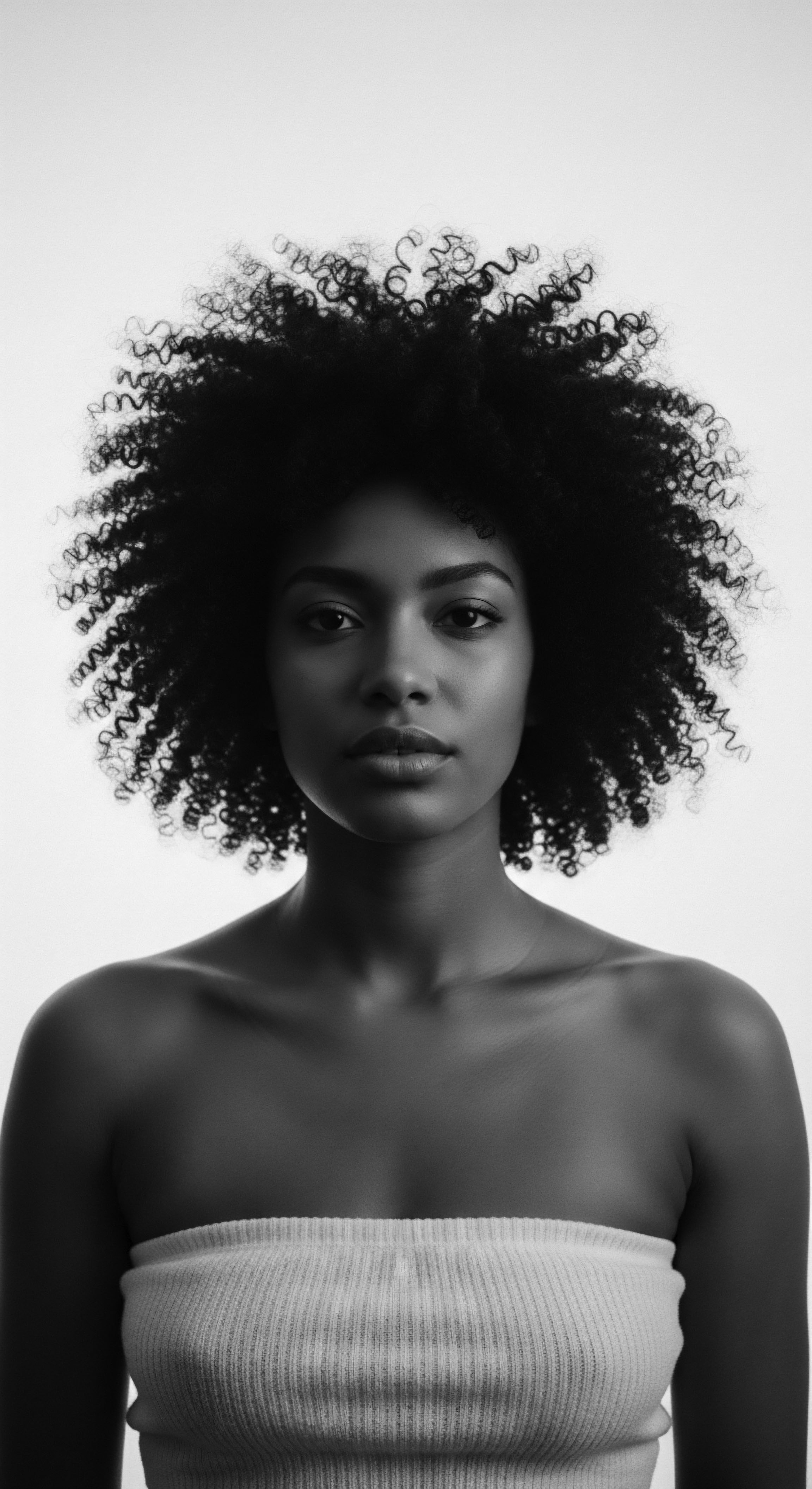
Sociological and Identity Implications
Beyond the biophysical and ethnobotanical dimensions, the academic meaning of moisture preservation for textured hair also encompasses profound sociological and identity implications. For Black and mixed-race individuals, hair has historically been a site of both oppression and resistance, a canvas for self-expression, and a tangible link to ancestral roots. The deliberate act of preserving moisture in textured hair, therefore, is not merely a cosmetic choice; it is a statement of self-care, cultural affirmation, and resilience against dominant beauty standards that historically devalued natural hair textures. This practice represents a reclamation of autonomy over one’s body and heritage.
The “good hair” versus “bad hair” dichotomy, deeply rooted in colonial legacies and the transatlantic slave trade, often equated hair dryness and perceived unmanageability with “bad” hair. Consequently, practices aimed at moisture preservation, which enhance the softness, pliability, and overall health of textured hair, became acts of quiet defiance and self-love. These rituals, often performed within intimate family or community settings, served as spaces for intergenerational bonding and the transmission of cultural knowledge, reinforcing a positive self-image rooted in one’s natural hair. The deep connection to identity makes the pursuit of moisture preservation a significant cultural act.
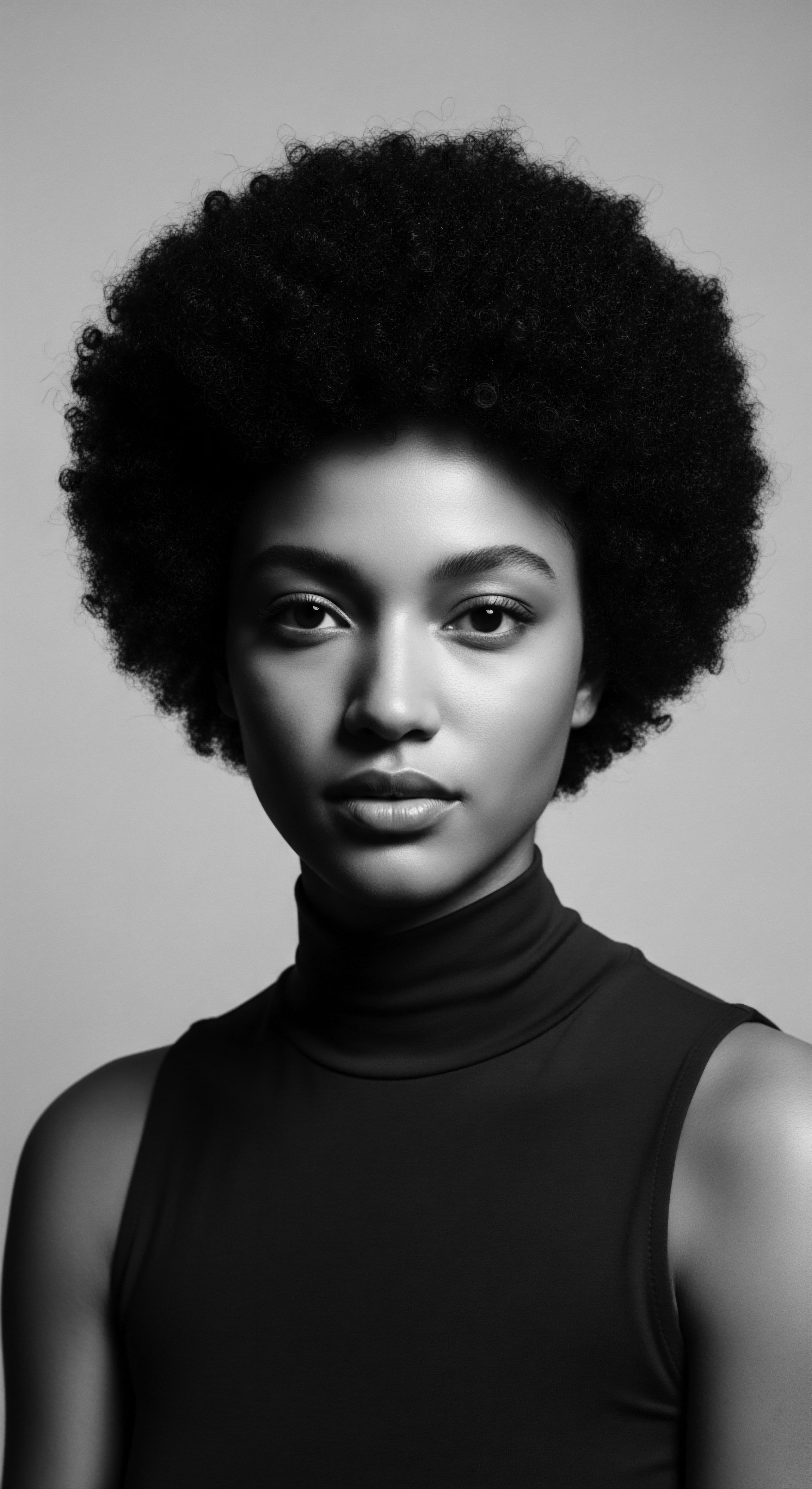
Reflection on the Heritage of Moisture Preservation
The enduring legacy of moisture preservation within the narrative of textured hair is a testament to human ingenuity, resilience, and an unwavering connection to ancestral wisdom. It is a journey that began with the intuitive grasp of elemental needs, deepened through generations of empirical observation and adaptation, and now finds validation in the intricate language of modern science. The very concept of moisture preservation, when viewed through the lens of the ‘Soul of a Strand’ ethos, is not a static definition; it is a living, breathing archive of cultural practices, a silent language spoken by hands that have nurtured coils and kinks through time.
This continuous thread of knowledge, stretching from the hearths of ancient African villages to the bustling salons of the diaspora, reminds us that care for textured hair has always been a profound act. It was, and remains, an act of self-preservation, a celebration of unique beauty, and a quiet affirmation of identity against forces that sought to diminish it. The historical practices of oiling, braiding, and communal grooming were not just about hygiene; they were sacred rituals that ensured the hair’s vitality, yes, but also preserved a connection to heritage, a sense of belonging, and a vibrant cultural narrative. The significance of this heritage cannot be overstated.
As we look upon our textured strands today, we see not just individual fibers, but a collective memory—a memory of ingenuity in the face of scarcity, of beauty found in natural forms, and of an enduring spirit that refused to be broken. The deliberate act of moisture preservation is a continuation of this ancestral pact, a way of honoring the hands that came before us, and a promise to future generations that the wisdom of our hair’s unique needs will continue to be cherished and understood. It is a harmonious blend of past and present, a quiet symphony of science and soul, all dedicated to the radiant health of every strand. The essence of this practice is a bridge across time.
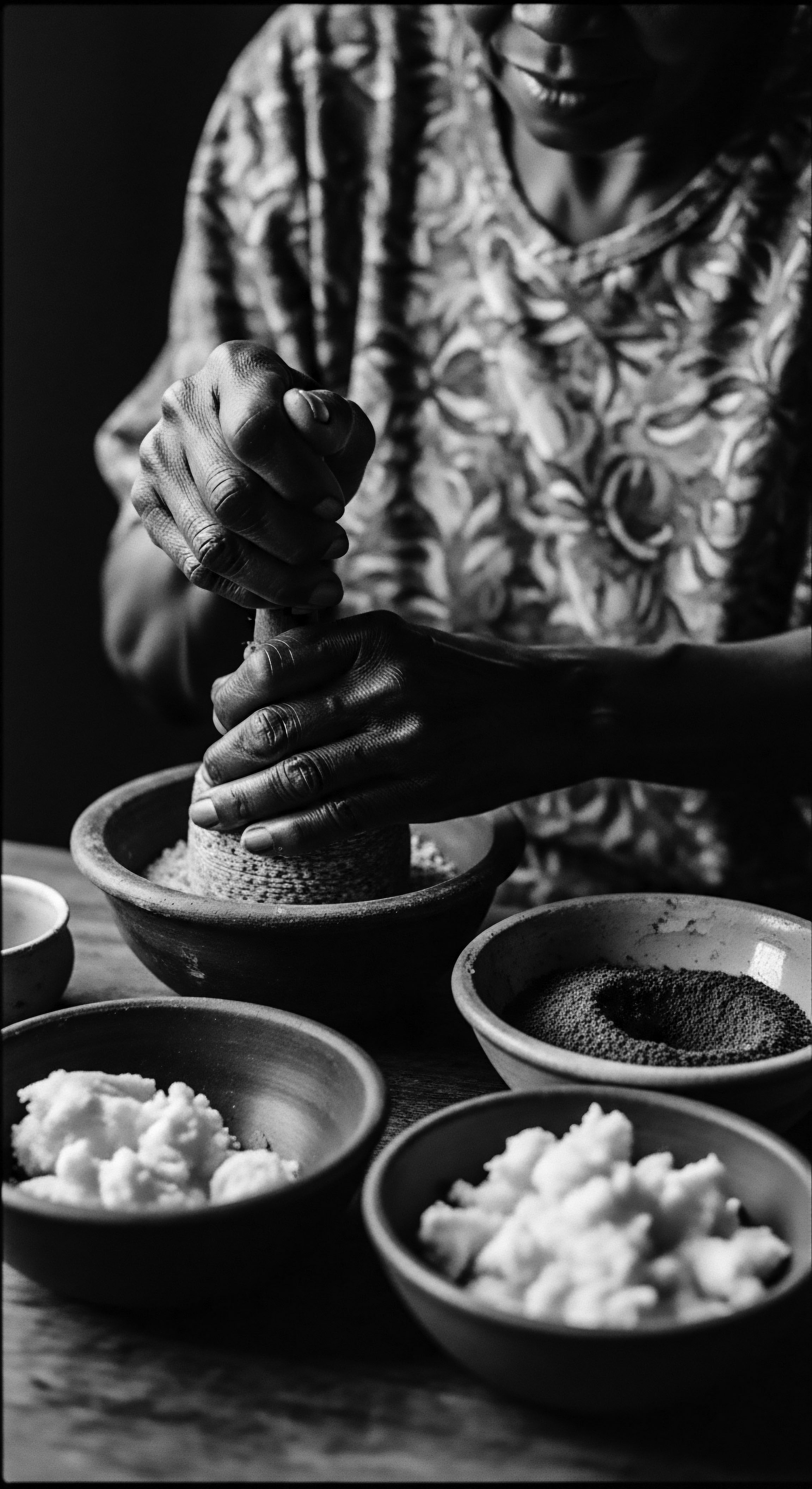
References
- Byrd, A. & Tharps, L. (2001). Hair Story ❉ Untangling the Roots of Black Hair in America. St. Martin’s Press.
- Rele, V. J. & Mohile, R. B. (2003). Effect of mineral oil, sunflower oil, and coconut oil on prevention of hair damage. Journal of Cosmetic Science, 54(2), 175-192.
- Voeks, R. A. & Moore, J. W. (2020). African Ethnobotany ❉ Poisons and Drugs, Food and Fiber Plants of Africa. CRC Press.
- Stengård, K. (2009). The Shea Butter Revolution ❉ From Tree to Global Commodity. Palgrave Macmillan.
- Corson, R. (2003). Fashions in Hair ❉ The First Five Thousand Years. Peter Owen Publishers.
